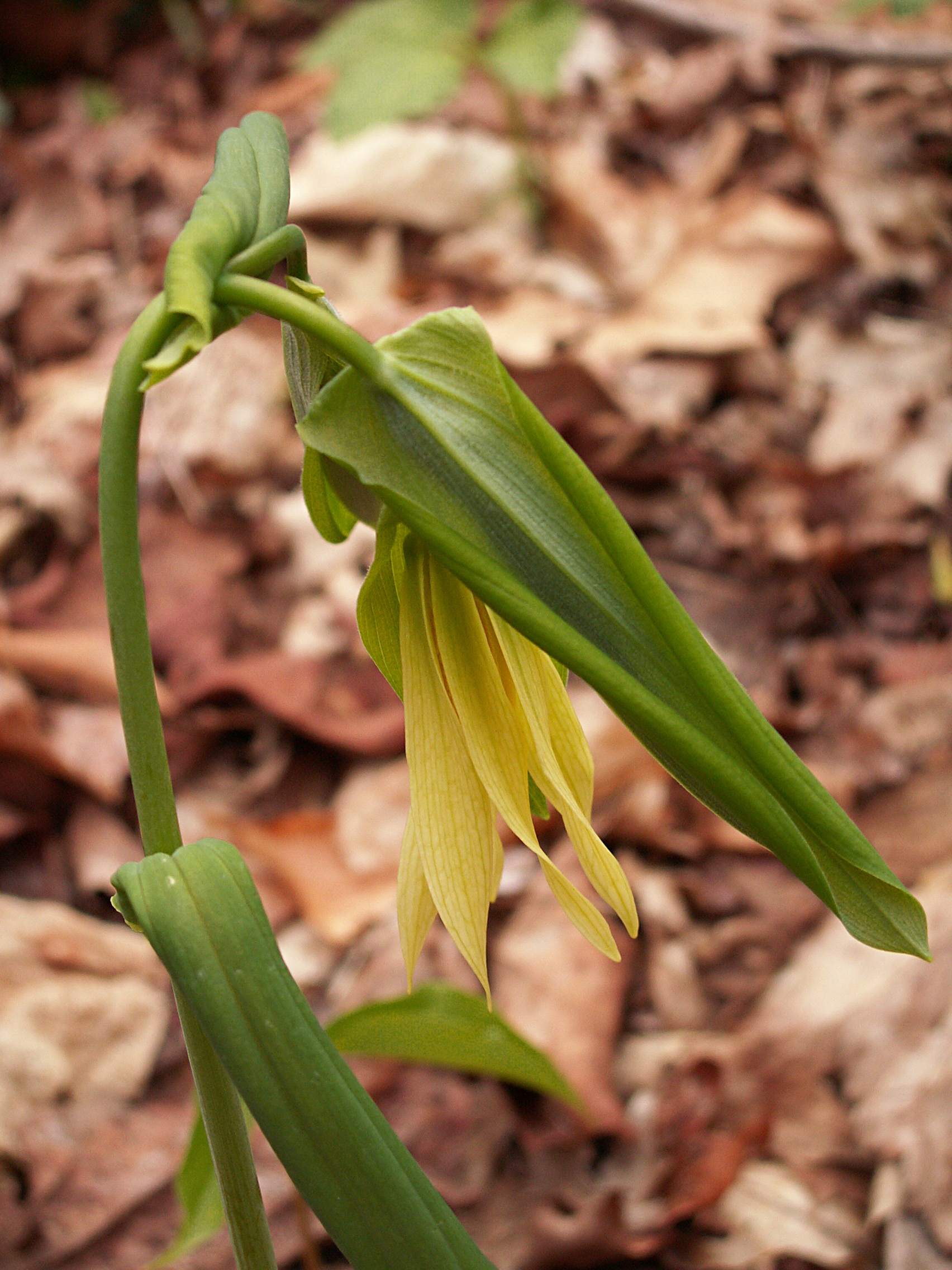 These odd-looking plants bloom in late April; the flowers appear while the rest of the plant seems to be still under construction. They like moist woods, especially stream valleys; this plant grew along the Trillium Trail in Fox Chapel. Supposedly not a very common plant, although it may be locally abundant, as it was here.
These odd-looking plants bloom in late April; the flowers appear while the rest of the plant seems to be still under construction. They like moist woods, especially stream valleys; this plant grew along the Trillium Trail in Fox Chapel. Supposedly not a very common plant, although it may be locally abundant, as it was here.
Gray describes the genus and the species:
UVULARIA L. BELLWORT. Perianth narrowly bell-shaped, lily-like, deciduous; the 6 divisions spatulate-lanceolate, acuminate, obtusely gibbous at base, with a deep honey-bearing groove within bordered on each side by a callus-like ridge. Stamens much shorter, barely adherent to their base. Capsule truncate, coriaceous, 3-lobed, loculicidal at the summit. Seeds few in each cell, obovoid, with a thin white aril. Stems terete, from a short rootstock with fleshy roots, naked or scaly at base, forking above, bearing oblong perfoliate flat and membranaceous leaves with smooth margins, and yellowish drooping flowers, in spring, solitary on terminal peduncles. (Name “from the flowers hanging like the uvula, or palate.”)
U. grandiflora Sm. Yellowish green, not glaucous; stern naked or with a single leaf below the fork; leaves whitish-pubescent beneath, usually somewhat acuminate; perianth-segments smooth within or nearly so (2.5-4.5 cm. long); stamens exceeding the styles, obtusely tipped; capsule obtusely lobed. (U.flava Sm.) Rich woods, w. N. H. to Ga., westw. to Minn, and Kan.

